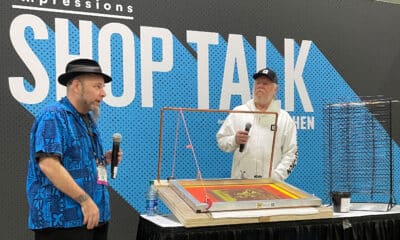(PRESS RELEASE) The global textile staples market is valued at US$ 170.1 billion in 2023, with sales projected to surge at 5.5% CAGR over the forecast period. Demand in the market is anticipated to reach US$ 290.6 billion by 2033. Increased consumption of textile staples in various industries, such as apparel, general and leisure, sportswear, interior flooring, and others, is expected to push sales during the forecast period.
Based on application, the apparel segment is likely to contribute over 50% of sales and register growth at nearly 3.6% CAGR during the assessment period. Besides this, the interior flooring segment is anticipated to witness the fastest growth over the forthcoming decade. The Asia Pacific Excluding Japan (APEJ) to be the leading region in the upcoming decade.
Which are the Key Trends Propelling the Demand in Textile Staples Market?
Growing Demand For Sustainable Textiles to Benefit Textile Staples Market
Preference for natural staple fibers like cotton, jute, and wool increases compared to synthetic staple fibers like viscous rayon and polyester. As the consumption of synthetic staple fibers negatively impacts the environment, the demand for natural and eco-friendly textiles is predicted to aid the growth.
One of the most extensively grown and utilized staple fibers in the textile industry is cotton, opines FMI. It is regarded as a multipurpose fiber with qualities like cooling, absorption, and softness and is used to make clothing for hot weather. Wool from sheep has insulating attributes, making it excellent for use in the production of knitted warm clothing.
However, synthetic fibers are also extensively used among end users. Hence, key companies are sustainably producing one of the most popular synthetic fibers, polyester.
Advertisement
According to ITP Media (India) Pvt. Ltd., India has spent US$ 2.5 billion on the textile industry and is estimated to host Textile Week at the Indian Pavilion in EXPO2020. As a result, the global staple fiber market is expanding due to increased investment in the textile sector and a rise in demand for sustainable textile materials.
What are the Disadvantages Associated with the Use of Synthetic Fiber?
Numerous industries, including furniture, textile agriculture, personal care & hygiene, and construction, employ textile staples fibers. It is produced from organic and synthetic materials. Despite having several advantages, synthetic staple fiber has several drawbacks that could slow the market’s expansion.
Poor hygroscopicity makes synthetic staple fibers like polyester, as these fibers are easily attracted to dirt and static electricity. After washing, it gets dry and loses its beauty and comfort. It also becomes sticky, uncomfortable, and clammy in hot or humid conditions since it is not breathable and traps heat on the skin. Thus, the demand for synthetic textile fibers is likely to be hampered due to their flammability, ability to retain odors, and poor moisture absorption.
2018 to 2022 Textile Staples Market Outlook Compared to 2023 to 2033 Forecast
The global market witnessed growth at a CAGR of 4.2% from 2018 to 2022, with a valuation of US$ 161.2 billion in 2022. As per the current estimate, the global market expand at 5.5% CAGR between 2023 and 2033.
Growth in the market is the growing expansion of the pharmaceutical industry and rising applications in the automotive and construction sectors. As of 2022, the surging consumption of fabrics and the growing fashion industry is estimated to increase the global demand for staple fibers.
As a staple fiber, it is vital in fabric and garment manufacturing. Changing fabric preferences, especially among millennials, is expected to boost the textile industry, driving growth in the global market.
Advertisement
According to the study, South and East Asia are expected to be the most lucrative regions for textile staples manufacturers. It is due to the flourishing textile industry and cost-effective raw materials across India, China, and South Korea. For instance, according to the India Brand Equity Foundation, the country’s textile industry was valued at US$ 223 billion in 2017 and is estimated to reach US$150 billion by 2023 end
What is the Demand Outlook for the United States Textile Staples Market?
Leading Textile Manufacturers in the United States to Collaborate with End Users to Gain Revenue
The United States market is expected to have a value share of 13.2% in the global market during the forecast period. Demand in the market is estimated to surge as textile manufacturers shift from producing commodity goods to specialized products such as technical textiles. As these textiles are substituting conventional fabrics, and non-fiber materials, such as metals, the demand for textile staples is expected to gain traction.
Textile manufacturers shifting from generic textile products to niche technical textile products face lesser international competition. Manufacturers’ primary focus is producing cheap textiles in higher volumes. Subsequently, leading companies in the United States are expanding their product lineup in the healthcare-related business to gain a competitive edge.
Additionally, medical textile manufacturers are focusing on refining existing products and on new product development to derive new materials with improved designs and features. All these factors are expected to boost the demand in the United States textile staples market.
Why is China Considered the Most Remunerative in the Global Market?
Advertisement
Export and Import of Textile Staples in China to Gain Traction through 2022 & beyond
China is estimated to be a prominent producer and consumer of textile staples globally, accounting for about 70% of the share in East Asia. The rapid growth in the construction and industrial sectors is anticipated to propel the consumption of textile staples. China is estimated to capture a CAGR of 6.3% in the global market by 2033.
As China is considered to have the world’s largest textile industry, staple fibers, including polyester, cotton, and cellulosic, are used frequently to alter the properties of the yarn.
Further, China is the world’s top producer and exporter of textiles, with a value of over US$ 154 billion, according to data from 2020. On the back of these factors, the sales in China’s textile staples market are projected to rise robustly over the forecast period.
Competitive Landscape
Key manufacturers are strategically increasing their global market presence by penetrating into emerging economies to set up manufacturing units to decrease operating costs and maximize profit. For Instance,
In February 2021, Oerlikon Group introduced its products on the digital platform Xibo. The company operates in artificial fibers filament spinning and staple fiber systems and provides a solution for producing nonwovens.
In February 2020, Eastman announced the expansion of its Naia fiber portfolio at Premiere Vision Paris (PV). The company has introduced a new cellulosic staple fiber Naia which offers a versatile eco-conscious material choice for sustainable fashion.
These insights are based on a report on Textile Staples Market by Future Market Insights.

 Press Releases1 month ago
Press Releases1 month ago
 Press Releases2 months ago
Press Releases2 months ago
 Columns1 month ago
Columns1 month ago
 Editor's Note1 month ago
Editor's Note1 month ago
 Marshall Atkinson1 month ago
Marshall Atkinson1 month ago
 Case Studies1 month ago
Case Studies1 month ago
 Headlines2 months ago
Headlines2 months ago
 Headlines1 month ago
Headlines1 month ago














